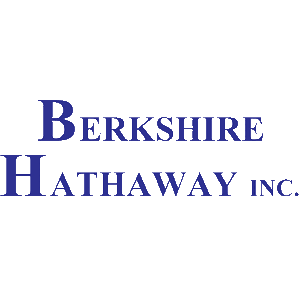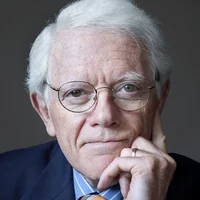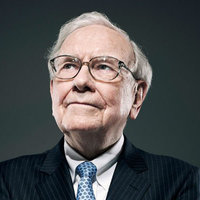
Canfor Pulp Products Inc
TSX:CFX


| US |

|
Johnson & Johnson
NYSE:JNJ
|
Pharmaceuticals
|
| US |

|
Berkshire Hathaway Inc
NYSE:BRK.A
|
Financial Services
|
| US |

|
Bank of America Corp
NYSE:BAC
|
Banking
|
| US |

|
Mastercard Inc
NYSE:MA
|
Technology
|
| US |

|
UnitedHealth Group Inc
NYSE:UNH
|
Health Care
|
| US |

|
Exxon Mobil Corp
NYSE:XOM
|
Energy
|
| US |

|
Pfizer Inc
NYSE:PFE
|
Pharmaceuticals
|
| US |

|
Palantir Technologies Inc
NYSE:PLTR
|
Technology
|
| US |

|
Nike Inc
NYSE:NKE
|
Textiles, Apparel & Luxury Goods
|
| US |

|
Visa Inc
NYSE:V
|
Technology
|
| CN |

|
Alibaba Group Holding Ltd
NYSE:BABA
|
Retail
|
| US |

|
JPMorgan Chase & Co
NYSE:JPM
|
Banking
|
| US |

|
Coca-Cola Co
NYSE:KO
|
Beverages
|
| US |

|
Walmart Inc
NYSE:WMT
|
Retail
|
| US |

|
Verizon Communications Inc
NYSE:VZ
|
Telecommunication
|
| US |

|
Chevron Corp
NYSE:CVX
|
Energy
|
We'll email you a reminder when the closing price reaches USD.
If you don’t study any companies, you have the same success buying stocks as you do in a poker game if you bet without looking at your cards.

Utilize notes to systematically review your investment decisions. By reflecting on past outcomes, you can discern effective strategies and identify those that underperformed. This continuous feedback loop enables you to adapt and refine your approach, optimizing for future success.
Each note serves as a learning point, offering insights into your decision-making processes. Over time, you'll accumulate a personalized database of knowledge, enhancing your ability to make informed decisions quickly and effectively.
With a comprehensive record of your investment history at your fingertips, you can compare current opportunities against past experiences. This not only bolsters your confidence but also ensures that each decision is grounded in a well-documented rationale.
Do you really want to delete this note?
This action cannot be undone.

| 52 Week Range |
0.335
0.95
|
| Price Target |
|
We'll email you a reminder when the closing price reaches CAD.
Choose the stock you wish to monitor with a price alert.

|
Johnson & Johnson
NYSE:JNJ
|
US |

|
Berkshire Hathaway Inc
NYSE:BRK.A
|
US |

|
Bank of America Corp
NYSE:BAC
|
US |

|
Mastercard Inc
NYSE:MA
|
US |

|
UnitedHealth Group Inc
NYSE:UNH
|
US |

|
Exxon Mobil Corp
NYSE:XOM
|
US |

|
Pfizer Inc
NYSE:PFE
|
US |

|
Palantir Technologies Inc
NYSE:PLTR
|
US |

|
Nike Inc
NYSE:NKE
|
US |

|
Visa Inc
NYSE:V
|
US |

|
Alibaba Group Holding Ltd
NYSE:BABA
|
CN |

|
JPMorgan Chase & Co
NYSE:JPM
|
US |

|
Coca-Cola Co
NYSE:KO
|
US |

|
Walmart Inc
NYSE:WMT
|
US |

|
Verizon Communications Inc
NYSE:VZ
|
US |

|
Chevron Corp
NYSE:CVX
|
US |
This alert will be permanently deleted.



























Good morning, ladies and gentlemen. Welcome to the Canfor Corporation and Canfor Pulp Second Quarter Analyst Call. A recording and transcript of the call will be available on Canfor's website. During this call, Canfor Corporation and Canfor Pulp's Chief Financial Officer will be referring to a slide presentation that is available in the Investor Relations section of the company's website. Also, the company's -- I would like to point out that this call will include forward-looking statements. So please refer to the press releases for the associated risks of such statements. I would now like to turn the meeting over to Mr. Don Kayne, Canfor Corporation and Canfor Pulp's Chief Executive Officer. Please go ahead, Mr. Kayne.
Thanks, Colin, and good morning, everyone, and thank you very much for joining the Canfor and Canfor Pulp Quarter 2 2020 Results Conference Call. I'll make a few comments before I turn things over to Alan Nicholl, our Executive Vice President of Canfor Pulp Operations and our Chief Financial Officer of both Canfor Corporation and Canfor Pulp. Alan will provide a more detailed overview of our performance in quarter 2. In addition to Alan and I, we are joined by Kevin Pankratz, who is our Senior Vice President of Sales and Marketing. I would like to start by thanking our incredible employees for their continued dedication and perseverance as we navigate the unprecedented challenges of COVID-19. As we've adapted to new working conditions, our employees have continued to perform extremely well, which contributed significantly to our positive results this quarter. In addition, our new systems have worked very well with the majority of our corporate employees continuing to work from home, which has been the case since mid-March. As an organization, we've demonstrated that we can work well in times of crisis and uncertainty. Our top 2 priorities continue to be protecting the health and safety of our employees and executing on our strategy to support our valued customers and sustain the business for the long term. As a result of the pandemic, we had to make a series of difficult decisions to take extended downtime across all of our operating regions, with our operations in British Columbia being impacted the most. In addition, due to an insufficient supply of economically viable timber, we made the decision to permanently close our Isle Pierre sawmill in May. The timing of this decision was expedited by the impacts of the pandemic on our overall business. We deeply regret the impacts these very difficult decisions have had on our employees, on our contractors and the local communities. I want to thank our valued customers for their understanding and support through this difficult period. Since the onset of the pandemic, we have been working closely with the federal, provincial, municipal and state governments and appreciate their willingness to work in partnership with Canfor and our industry. Turning to our markets and beginning with lumber. Conditions were extremely volatile during the second quarter. In April, global lumber demand declined sharply in the wake of closures of nonessential businesses and lockdowns in many parts of North America, Europe and Asia. Unprecedented demand from the repair and remodeling segment, lean inventories across the supply chain and reduced lumber supply resulted in dramatic increases in North American and European lumber pricing as the quarter progressed. Lumber prices have continued to increase early in the third quarter, reflecting strong demand fundamentals and limited available supply, combined with some challenges on the transportation front. While lumber demand has been encouraging, there remains significant uncertainty over the long term. Offshore lumber demand was relatively stable during the quarter with prices seeing more modest increases. During the second quarter, we completed the 100% ownership of the Elliott Sawmilling Co., which increases our capacity in the U.S. South by a further 210 million board feet. In addition, Vida entered into an agreement to purchase the 3 sawmills in Sweden from Bergs Timber. This transaction is anticipated to close in the third quarter and is supported by Vida's strong performance and solid balance sheet. These 2 acquisitions are a further step in our goal to diversify our business globally. In particular, the strong local relationships of our co-owners in Vida allowed us to identify and complete the Bergs Timber transaction at very attractive pricing. After taking account of these acquisitions, our regional production mix is 43% British Columbia; 31%, the U.S. South; 22% in Europe; and 4% in Alberta. Compared to 2013 when our business was 88% Canadian-based, we believe this more regionally diversified operating portfolio provides a more stable earnings platform for the future. Our pulp business was significantly impacted by reduced residual fiber supply and increased fiber costs due to the extensive sawmill curtailments in British Columbia during the second quarter. In addition, we experienced challenging global pulp prices as the quarter progressed in response to much lower demand for printing and writing papers. Global pulp markets are anticipated to remain under pressure through the third quarter as a result of higher inventories and ongoing weakness in demand. In response to reduced fiber availability and challenging market conditions, Canfor Pulp took a 3-week curtailment at Northwood in the second quarter and is currently taking a 4-week curtailment at PG and Intercon pulp mills. As a result of the challenges and uncertainty caused by COVID-19, both Canfor and Canfor Pulp have taken a number of steps to further enhance our already solid liquidity position. I will now turn it over to Alan Nicholl to talk about the quarter.
Yes. Thank you, Don, and good morning, everyone. The Canfor and Canfor Pulp quarterly results were released yesterday afternoon and come together with our overview slide presentation in the Investor Relations section of the respective companies' websites. In my comments this morning, I'll briefly speak to quarterly financial highlights, a summary of which is included in our overview slide presentation. Our lumber segment reported operating income of $107 million for the second quarter compared to a loss of $89 million for the previous quarter. Our Q2 results included a net duty expense of $19 million, restructuring costs of $14 million and an $81 million recovery of a previously recorded inventory write-down provision, reflecting the steep increase in lumber prices that we saw towards the end of the quarter and into July. After adjusting for these items, the lumber segment generated operating income of $60 million. Notwithstanding the disruptive impacts of COVID-19, which resulted in its extensive production curtailments across all of our operating regions during the quarter, improved lumber segment results reflected a marked improvement in lumber demand and prices as the quarter progressed. The company's U.S. South operations benefited from a strong pickup in Southern Yellow Pine for lumber prices in May and June, which translated into improved sales realizations and operating results despite a 12% COVID-related decline in production quarter-over-quarter. Our European lumber business continued to perform well in the quarter, also generating improved results versus quarter 1 against the backdrop of minimal production disruption and solid demand, particularly from the repair and remodeling sector during the quarter. The business continues to meet our initial expectations with earnings so far in 2020 tracking ahead of 2019. In Western Canada, operating results were impacted by extensive production curtailments as Western SPF lumber prices remained under pressure for most of the quarter. However, the sharp increase in Western SPF prices have supported a return to more normal operating rates in June, and a strong finish to the quarter was the major factor in improved quarter-over-quarter operating results for that region. Our pulp business reported an operating loss of $6 million for the second quarter compared to an operating income of the same amount reported for the previous quarter. For the quarter, the benefits of a weaker Canadian dollar and improved BCTMP prices were outweighed by increased fiber costs resulting from materially lower fiber volumes available as well as the $8 million inventory write-down at the end of June, reflecting the weaker prices. Pulp shipments were down 14% in the quarter, reflecting a 13% in pulp production related to production curtailments at Northwood combined with a vessel slippage over quarter end. Pulp unit manufacturing costs reflected the increased -- aforementioned increase in fiber costs as well as the impact of adjusted production volumes, but were largely offset by seasonally lower energy costs and reduced maintenance spending. At the end of the second quarter, Canfor, excluding Canfor Pulp, had net debt of approximately $160 million and available liquidity of approximately $655 million. Liquidity improved by approximately $255 million during the quarter, reflecting higher cash earnings, a seasonal unwind of working capital, a tax refund, various cash conservation measures in response to COVID-19 as well as increased and extended banking facilities. Canfor Pulp ended the second quarter with net cash of $6 million and available liquidity of approximately $150 million. Liquidity improved by approximately $50 million during the quarter, supported by a drawdown of accounts receivable balances and partial insurance proceeds related to the Northwood recovery boilers on scheduled outage in the fall of 2018. Excluding capitalized major maintenance, we currently anticipate that 2020 capital spending will be approximately $100 million for the lumber segment and $45 million for Canfor Pulp. The aforementioned insurance proceeds for pulp will be reinvested in that same recovery boiler during an extended scheduled maintenance outage in the fall. And with that, Don, I'll turn the call back over to you. Thank you.
Yes. Thanks, Alan. So operator, we're now ready to take questions from the analysts. Thank you.
[Operator Instructions] So your first question comes from Hamir Patel from CIBC Capital Markets.
Can't hear the question.
One second here. Hamir, just one moment.
Don, can you hear me?
I can hear you now, Hamir. Yes.
Okay. Great. So Don, this lumber rally is getting a lot of comparisons to 2018. What do you think is different this time?
The lumber rally compared to 2018?
Yes.
What's the difference? Yes. I don't know. For us, I mean, I think that as you look forward here, clearly, we -- after the -- when COVID-19 started to impact us here, I think we saw, obviously, a significant retreat everywhere as people tried to get -- trying to understand just the severity of things. And I think that compared to -- which we, of course, in 2018, was a completely different situation. So I think with the -- all the reductions in production that we've seen during that period, and now the recovery that we've seen to some degree, I mean, it's just -- I think it's just been quite a bit different situation than 2018. I mean, we're still, obviously, Hamir, looking forward here. We still got lots of challenges ahead of us, but I think that some of the fundamentals, particularly on the retail side, continue to look pretty decent, frankly, and better than what we would have expected. And so I think really going forward here, while we're certainly being very, very cautious beyond this quarter, right now, we're seeing the results of that right now. So that, I guess, that's what I would maybe comment on that right this -- right now.
Okay. No, that's helpful, Don. And just when you look at the capacity that's come out of British Columbia over the last 18 months, in this higher pricing environment, what do you see the sort of maybe risks that some of that stuff gets restarted? And if you could speak to maybe how much of that was removed. Do you think this was taken out permanently?
Yes. Well, I think that there's been a fair bit removed already. I mean, I think some of the numbers that we've heard are upwards around 2 billion board feet, right, that's out there. And that -- you got to remember, most of the production that's come out is due to the mountain pine beetle, right? And what the log supply is going to look like here going forward, we still believe ourselves, there's another 1 billion board feet that still has to come out. And whether that's all of that's this year or that's over the next couple of years, that's -- we still believe that, that has to happen. And where that's going to happen in terms of British Columbia, at this point, that's probably still up for debate, but that's how we would look at that right now.
Great. That's helpful. And just a last question for me. Don, we've seen the U.S. delay these -- the next duty revision now by another 60 days. Do you see any risks of commerce just continuing to issue these extensions as we progress?
Absolutely. I mean, I think that we're in a period of time here where there's not a lot of certainty there at all. And I think that the risk of further delays for sure is a risk for sure, in our view.
Your next question comes from Sean Steuart of TD Securities.
Following on Hamir's question, Don, I'm wondering if you can comment on your ability to squeeze extra production out of your sawmills, I guess, potentially initially adding extra shifts across your portfolio. And any broader thoughts you have on how quickly or slowly the industry's supply response might come in light of how strong margins are in the sector right now?
Yes. I mean, I think from our standpoint, we're basically now running, other than the Mackenzie sawmill in British Columbia, which is currently down indefinitely, all the rest in British Columbia, certainly in Europe and certainly in the U.S. South are essentially running now at 100% already. So we're -- in terms of ability to increase over and beyond that, whatever over and above that will be to some degree just based on some of the capital that we spent to maybe get a bit more out of it. But for the most part, Sean, I would say that we're pretty close to our maximum at this stage, right? So -- and what was your second question was...
Broader thoughts on how the industry might respond with extra supply. I mean there's -- it doesn't look like there's any greenfield coming at this point, but potential for brownfield expansion, those sorts of things.
Yes. There might be a little bit here and there. I mean there's still been some capital being spent, I'm sure, everywhere, right? But I would say right now, based on price levels, I would say that our view would be that pretty much everybody is running pretty hard now and running close to capacity. I would definitely -- maybe the only caveat might be that there's been some log supply issues in parts of British Columbia potentially, but we're not seeing that ourselves but perhaps others. But for the most part, I would say that we're most -- there's not a lot of upside here in terms of production levels over and above where we're at. And certainly, that would be our view.
Okay. A question maybe for Alan. It looks like you're opening up on CapEx a little bit this year versus the initial sort of austerity spending, I guess, you guys were guiding to in the initial wake of the pandemic. Do you have any sense of how spending might trend into 2021? I imagine there's room to take it even higher. And then can you give us a bit more detail on the boiler spending program at Northwood? Is that rebuild still in the cards longer term? Or is what you're doing now just extending the life that much more, and you don't have to think about a larger CapEx spend down the road?
Okay. Yes. No, thanks. So with respect to your first question around opening up the valves a little bit on capital, I think that's fair to say. But the key words are a little bit. We are focused on a couple of very attractive high-returning projects, the most notable of which is a second phase at our Camden mill, which is a very high-performing mill in the U.S. side. In the pulp space, our expanded capital, in large part, reflects some targeted spend on our RB5, which you may recall was the boiler that cost -- we had the offset in late 2018. So what we're doing there, in essence, is taking part the insurance proceeds that we received with respect to that thus far and focusing on extending the useful life of that RB5. Today, we're thinking we'll be able to get between 4 and 6 years more life out of that. Based on what we know today, we'll have a much better sense of that here before the end of the year. But the intent is to -- just to be clear, to extend the useful life of that particular recovery boiler. In terms of the long term, we still have -- we have 2 real options there, Sean, one of which is a brand-new recovery boiler, replacing the 2 that are there today. And the other option is extensive refurbishment of both RB1 and RB5 is there today. So both have their merits. One obviously comes with a higher sticker price per se, but we've made no firm decision with respect to either option at this point.
Your next question comes from Paul Quinn of RBC Capital Markets.
It seemed like we had lower lumber inventory coming into 2020 and then COVID hit and people were retrenched, and it seemed like it -- inventory in the channel got even lower. Where are we at right now in terms of versus this time last year or at the start of the year?
Yes. I would say, Paul -- I mean, I'll let Kevin talk more about it, I would say we would still think that when inventory levels are lower, lower than they were last year and are continuing relatively low because the takeaway has been good. And so I think we're still in that situation and we'll remain in that situation here for a while, right? And so that's probably what I would say. Kevin, what are you seeing out there, really, when you look around the world?
Yes. No. So Don, for sure, in North America, lumber inventories are low. The -- if you look at the R&R market segment there, they had that huge demand throughout Q2. And so I think you're still seeing some really strong demand signals there that are really putting pressure on inventories. And then on the new home construction side there, I think folks going into Q2, inventories are relatively balanced. And then as people were going into this unknown situation with COVID and impacts on housing demand, there was a draw on working inventories and didn't replenish sufficiently when we saw a recovery in May. So North America is still quite lean. I think in Asia, inventories are a little bit more -- a little bit higher in balance. But in Europe, again, very tight inventories and strong order files. So that would be my assessment on the inventory situation.
And Kevin, I think also -- wouldn't you say, Kevin, that the [indiscernible] as well, I mean, you talk a lot about this, but the home center demand has been so strong compared to what we -- anybody would have expected. Combined with the industrial side with the treaters, that it's pretty much -- unprecedented may be a strong -- too strong a word, but it's been extremely strong and much stronger than we ever would have expected and which has really allowed us to extend our order files. Kevin, that's correct, pretty much?
Yes, absolutely. And then under that whole R&R home center type segment, it's not just to do-it-yourself traditional customer base. It's also that customer base like that pro, the pro -- that contractor that's coming in there, and you're seeing more and more investment in people in their homes and into rural environments. And so we think that's going to continue to drive demand and keep pressure on inventories.
Okay. And then just talking about order files, I mean, we've got pretty strong pricing here. How far out does your order file go at this point?
Go ahead, Kevin.
Yes. So for North America, yes, actually, our order files are well into August there, Paul. And in Europe, like I think we mentioned in the opening comments there, order filed into pretty much October. And then, of course, our Asia order files are pretty much into -- pretty much locked in to Q3 already. So very, very solid order files compared to historical norms.
Okay. And then just recently, Vida made acquisitions in Europe. Would it be safe to say that, that's a continued area of interest for you guys to continue to grow that platform?
Absolutely, Paul. I mean it's -- as we continue to spend more time on Europe and our European business, and from our view, there's a terrific amount of upside there, and we're really, really pleased with that acquisition. And we see much more opportunity to grow in the years ahead there. And the stability in Europe and the business there just continues to be positive. And so I was safe to say that we will continue to grow there over time.
All right. And then last question just on lumber. Q3 costs with BC stumpage, is that a material change? And what do you expect in the quarter?
Kevin, do you want to take that one in terms of how -- I think Paul's question is looking forward here, Q3 with the stump in -- with the reductions and so forth, where do we see pricing going?
Yes. I think with Q3, we see some pretty strong pricing. We think that's going to relatively continue into September and then, beyond that, don't really have a lot of uncertainties, but feel that the pricing trend that we're in right now in this range here is going to continue into Q3.
Yes. Whether it continues or not, Paul, but the order files that we've got, and Kevin, I think you could substantiate this, for sure, is that we've since seen some of the more -- the longer order files than we've seen in quite some time, frankly. And as really Europe, we always have a strong order files. So that's not such a big change potentially or particularly. But certainly, in the U.S. and in Canada, both those operations, we've seen order files that typically you don't see in terms of number of weeks, right? So -- but again, like Kevin mentioned and I think Alan mentioned also, when you get out beyond Q3, that's when we -- we're taking a more, obviously, conservative approach here in terms of where we might see things go, so.
Your next question comes from Mark Wilde of Bank of Montreal.
It's a much different situation than we had 3 months ago.
Yes. That's a good thing for sure.
I wanted to start off by just kind of talking about the capital allocation priorities. I mean it looks like you're going to throw off a lot of, lot of cash in the third quarter. I'm just curious about how you're thinking about prioritizing that in terms of debt reduction, M&A, share repurchase, special dividend, all the different options there.
For sure. Maybe, Alan, I know you've been -- we've been working a lot on this. Why don't you speak to that with -- to Mark's questions?
Yes. No, for sure. Yes. I think we typically have -- we've tried to be fairly disciplined as to how we allocate our cash, and clearly, the challenges have been more pronounced in more recent times. But to answer your question, I think it's fair to say that debt reduction will remain a key area of focus for us. We accept that we took out more debt, obviously, with respect to the Vida acquisition and, to a lesser extent, the Elliott acquisition as well. But debt reduction clearly is a top priority for us. I think on the M&A front, I think what you've seen through the Bergs announcement is our desire to be able to take advantage of attractive smaller acquisition targets. But we think those will be more selective and, to Don's earlier point, more targeted, obviously, in Europe and potentially in the U.S. South as well. And then we have to obviously maintain our focus on capital for our existing operations as well. Mark, you appreciate that we've curved to spend there this year, and it's important that we go back to a more normalized targeted and disciplined spend in that arena as well. So those are the 3 big areas of focus, I would say, for us, as we look out right over the balance of the year and indeed into 2021.
Alan, I think -- and Alan, you covered it well there. And I think the thing, though, just to emphasize, though, is on the debt reduction piece of all of those areas. Like we -- our focus is going to continue to be because there's still uncertainty out there for sure beyond Q3, perhaps even into Q4. But debt reduction is going to continue to be a focus for sure. And then if there's an attractive target, as Alan mentioned, comes up, we'll certainly look at it on a very specific way, but debt reduction clearly is our #1 focus.
Yes. I'm just -- I'm kind of curious on the share repurchase side. I mean it's hard for me to imagine that you can make an acquisition of lumber capacity as cheaply as your own equity right now. Any thoughts on that?
Yes. Go ahead, Alan.
Yes. So Mark, I think I'll just echo what I said a few minutes ago. I think we believe there's higher priorities today. And I would say, just in terms of your comment around share repurchasing, I think we're very encouraged by what we see in respect of the Bergs announced acquisition. We believe that the economics of that are very compelling. The synergies are very attractive and the payback period likewise. So one could discuss the merits of both for some time, Mark, but we're very comfortable with what we've outlined as our key priority, certainly for the foreseeable future.
Let me just press on this just a little bit further because if I go back 2 years ago, you were buying your stock at almost twice the price it's at today. And so I'm just kind of curious, I mean, we're kind of getting a -- an unexpected windfall, and I wonder if there isn't some merit in taking a portion of that windfall and being opportunistic right now about the stock.
Yes. I think, I mean, again, Mark, not maybe the best forum to have that conversation. But I think the diversification angle that we're taking here, to Don's point earlier in the call, is a key part of really driving value across our company. And we believe that we're seeing the benefits of that through, not just more stable earnings, but also improved earnings in many parts of our business. So we're comfortable with the approach, as I say, that we're adopting there. And there's so much uncertainty. There's so much uncertainty out there, too, Mark, that we just do well to be mindful of that as well.
Yes. No, like I have no problem with that. I wonder if we can turn to just sort of as you think about M&A, sort of how do you kind of weigh opportunities in the U.S. South versus kind of opportunities in Europe right now?
Yes. Alan, you can jump in there, too. But I think right now, I mean, we made a year ago or 1.5 years ago a pretty significant acquisition and moved into Europe. I think that's turning out just exactly the way that we expected it to. And at the same time, we've done the same thing in the U.S. South, and we're trying to take extremely disciplined approach there and try to focus on companies that -- and it's why we're focusing on the smaller companies because we can really target either. Whether it's product mix, whether it's location, but those 2 areas and where there's a strong employment base, I guess, will be the other one. Those, first and foremost, right? And as we look forward, I would say that we don't -- I don't think we would rank Europe or the U.S. South any different. They're both areas that we really believe on a long-term basis are going to add to the stability of the company through that diversification period. And so right now, I mean, there's clearly -- there's opportunities in both places today that we continually look at. But I would say that we would look at them both as positive opportunities going forward, and it will just depend on what just kind of comes up at the time, right? But clearly, we're really, really pleased with what we've been able to do in the U.S. South from a regional point of view, from a company point of view, from a people point of view and exactly the same in Europe. There are some opportunities in Sweden that we are continuing to look at. We've got a very strong management team there, as we do in the U.S. South, and we'll just keep assessing it as we go forward there.
Okay. And then just on the South, Don, if we go back a couple of years ago, you were looking at that greenfield down near Athens, Georgia. Is a greenfield an option for you if we look out over the next couple of years?
Yes. I think so. I mean it's possible for sure. I mean we're going to grow the business down in the U.S. South. We really like it down there. There's -- we've got a very good, strong team down there that's -- that we're very confident in and comfortable with, and they're looking at opportunities all the time. So it's just going to depend. But we do think that over the next couple of years, as you outlined, Mark, there could be that opportunity, but we're not there right now. We're just sort of -- we're evaluating some existing companies potentially, but that's where we're at today. So -- but down the road, definitely on the table.
Yes. And can you -- Don, is it possible for you guys to talk at all about what you're seeing in terms of imports coming into the U.S.? I think when you get lumber prices up near these levels and you've got a relatively strong U.S. dollar, I was wondering about sort of European imports coming into the East Coast of the U.S.
Yes. Good question. I'll throw that over to Kevin because I know he spends a lot of time on that himself and knows those -- all the players very, very well. So Kevin, why don't you take that?
Sure. Yes. Mark, yes, we have seen an increase coming in, especially from Germany and Central Europe with given their spruce beetle challenges and their desire to manufacture out as soon as possible, so between China and the Eastern U.S., those have been big markets for them. And I think we're on track to be about like 1.2 billion board feet kind of annualized pace there, Mark. And -- but the Europeans also have other options as well with Europe recovering, that's going to keep them engaged, especially in the U.K. and other parts of Europe, but definitely, on the upside, but still within that 1.2, 1.3 range is our expectation for this year.
Okay. That's good.
One thing, just hang on. Sorry, Mark, but just to add to what Kevin said. Kevin, I think we would just say, though, that when that product coming out of Germany and Austria and so forth, in a lot of cases, we don't compete with, though, right, because of the quality of it compared to what you're getting up in the north. Would that -- maybe talk to Mark a bit about that because there's quite a bit of a difference there from product coming from Central Europe versus coming from Scandinavia.
Yes. Absolutely. I mean the impacts of the spruce beetle and you start to see those challenges, which is why they have to ship it to different markets like China, and those products don't necessarily go to Japan with higher-valued markets, and that's where Scandinavia has -- the fiber is such that it has to go to more higher-valued pieces, where it's not so easily substitutable. So definitely, there's a dynamic playing around with the fiber quality, and you just can't say Europe, one paintbrush painting all of Europe. There is some changes there. And of course, there's some urgency to get at that spruce beetle before it deteriorates even further.
Okay. All right. Makes perfect sense. The last one for me, Don, I wondered if you can just talk with us a little bit about where you see kind of the pulp industry in British Columbia going. We've got -- we've definitely got constraints on fiber. You've talked about that, and we're clearly heading for some rougher sledding in the global pulp market over the next, at least, the next quarter or 2.
All right. For sure. Yes. And we've been doing a lot of work on that, particularly Alan and his group there. So maybe, Alan, what are you -- maybe you can give Mark a bit of an update there in terms of how you're looking at things going forward, and particularly in British Columbia around your fiber -- or your pulp business, excuse me.
Yes. No, for sure, Mark. And I appreciate the question. It's one that I think every BC pulp producer is getting these days. I mean we're all facing various challenges, but much -- many of which are around the fiber setup here. So a lot of what we're doing today is responding, obviously, not just to weak markets, but to the challenges that we saw through Q2 in the weaker summer operating rates. And we are focused on making sure that we're going to be able to run our pulp mills, our craft pulp mills, in particular, through the winter. That's step 1. And I think probably every BC pulp producer is thinking likewise in today's market. Clearly, fiber is tight. And so the onus is on producers like ourselves to be very mindful of targeting improved yields, looking for every ounce and ODT of fiber that we can get. So we're working very hard there. I think I've mentioned before that we've secured additional business in the last 9, 12 months. We're pleased with that. Part of the challenge is keeping a lid on the more expensive fiber stream, notably whole log chips. And that's probably our major concern, and I would hazard a guess that it's a major concern of many in the BC context. The price of whole log chips delivered to our pulp mills is much higher than it's ever been. So we're working really hard at that. We've got some ideas as to how to drive costs out through capital, upgrades and such like, but it is a challenge, no question.
Do you anticipate, Alan, that we're going to see kind of a contraction in pulp capacity in the BC interior, the northern interior?
I can't comment definitively on that, Mark. I think we've clearly seen some curtailments in the BC context, and that's not a surprise. We'll just have to wait and see, Mark. It's a fair question. It's just hard to call when you look out over the next 2 or 3 years. And certainly, if the curtailments and rationalizations continue to occur, I think at minimum, you're going to see whether you have the potential to see more curtailments, that would be certainly one thing that we've seen over the last 2 years, more curtailments.
There are no further questions at this time. Please proceed.
Hello?
There are no further questions at this time. So you may proceed.
Okay. I'm sorry. I missed you there. So thanks very much and -- everyone that joined the call, we appreciate all your support, and look forward to working with all of you and speaking with you at the end of this Q3. So thanks very much, and we'll talk to you soon. Bye-bye.
Ladies and gentlemen, this concludes your conference call for today. We thank you for participating and ask that you please disconnect your lines.